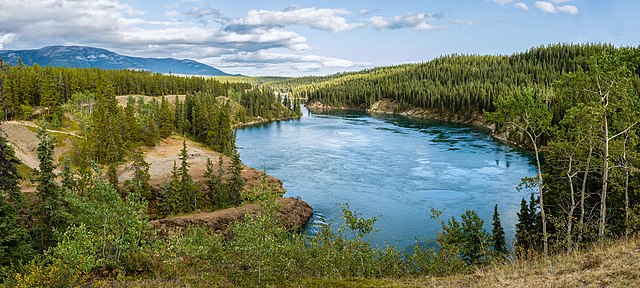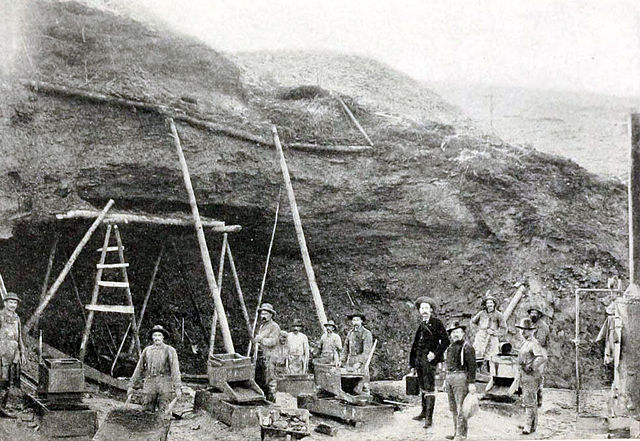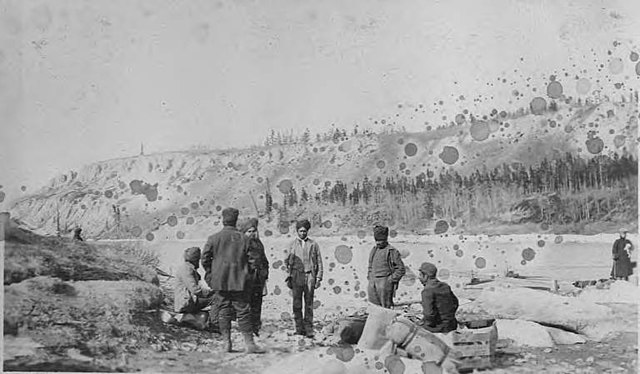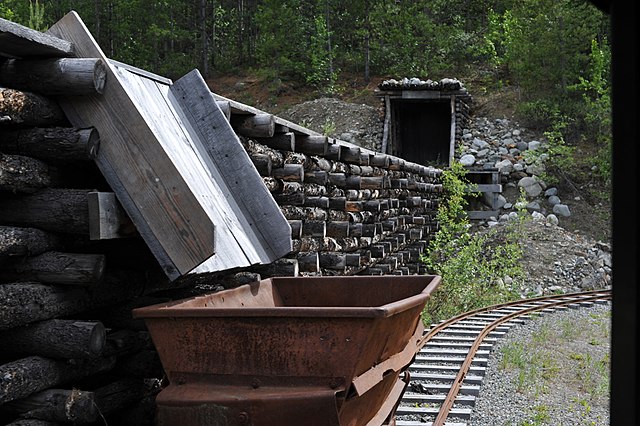The Yukon River is a major watercourse of northwestern North America. From its source in British Columbia, it flows through Canada's territory of Yukon. The lower half of the river continues westward through the U.S. state of Alaska. The river is 3,190 kilometres (1,980 mi) long and empties into the Bering Sea at the Yukon–Kuskokwim Delta. The average flow is 6,400–7,000 m3/s (230,000–250,000 cu ft/s). The total drainage area is 833,000 km2 (321,500 sq mi), of which 323,800 km2 (125,000 sq mi) lies in Canada. The total area is more than 25% larger than Texas or Alberta.
Canoeing the Yukon River
The bridge across the Yukon River at Carmacks on the Klondike Highway
The E. L. Patton Yukon River Bridge carries the Dalton Highway over the Yukon north of Fairbanks.
Crossing the Lake Laberge by canoe
Yukon is the smallest and westernmost of Canada's three territories. It is the third-least populated province or territory in Canada, with a population of 45,148 as of 2023. However, Whitehorse, the territorial capital, is the largest settlement in any of the three territories.
The Yukon River at Schwatka Lake and the entry to Miles Canyon
Hill-side mining during the Klondike Gold Rush, c. 1899
Sikhs in Whitehorse, Yukon in April 1906
A conveyor belt and cart outside of a mine tunnel in the Yukon. The economy of the territory has historically been centred around mining.








